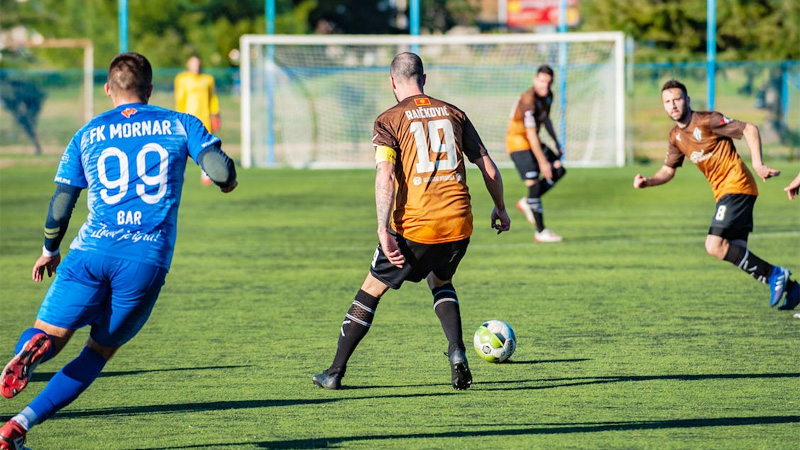Soccer, also known as football in many parts of the world, is the world’s most popular sport, captivating millions of fans and players alike.
While the traditional 11-a-side game is the most well-known form of soccer, the sport boasts a diverse range of variations that showcase creativity, skill, and cultural heritage.
In this blog post, we will embark on a journey through the captivating world of “Types of Soccer,” exploring various exciting variants that have emerged across different regions and cultures. Stay focused.
15 Types of Soccer
Soccer encompasses various forms, including traditional association football played on a rectangular field, fast-paced futsal on a smaller court, beach soccer on sandy shores, street soccer for freestyle play, blind soccer for visually impaired athletes, and powerchair soccer for wheelchair users.
1. Association Football (Soccer)
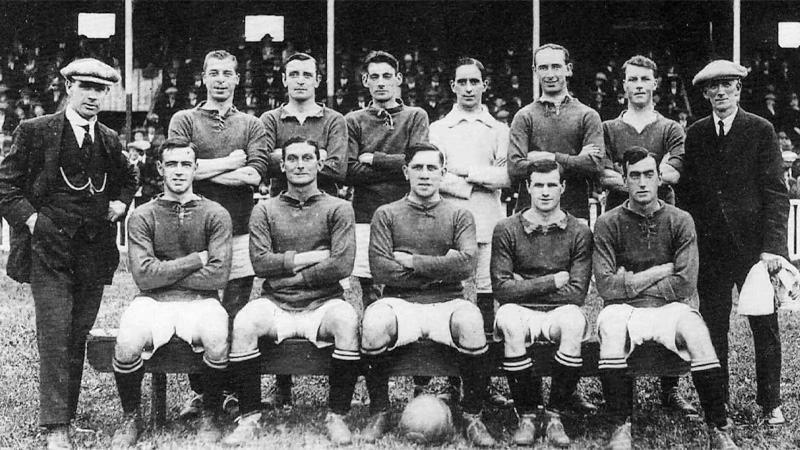
Source: historic-uk
Association Football, commonly known as soccer, is the most popular and widely played form of the sport around the world. It is played on a rectangular field with two teams of eleven players each, aiming to score goals by kicking the ball into the opposing team’s net.
The game emphasizes skill, teamwork, and strategy, with players utilizing various techniques such as dribbling, passing, and shooting to outwit their opponents.
Association Football is governed by FIFA (Fédération Internationale de Football Association) and has a massive following, with numerous leagues and competitions held at both national and international levels, including the FIFA World Cup, UEFA Champions League, EPL, Serie A, and many more.
2. Futsal
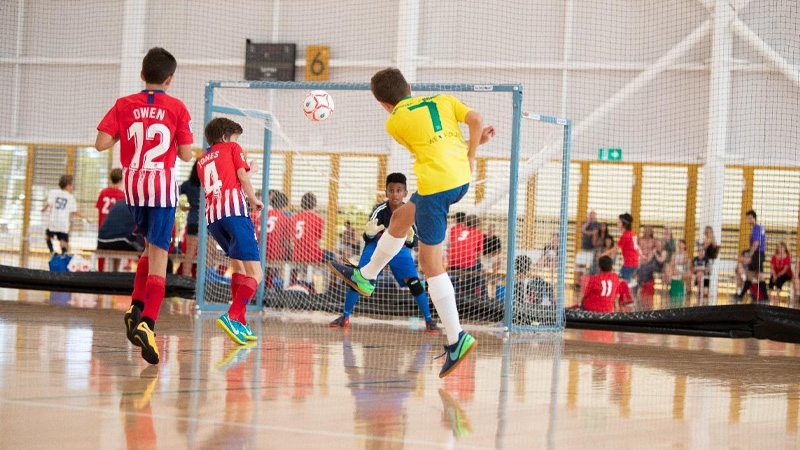
Source: soccerdebrazil
Futsal is a variant of soccer that is played on a smaller, hard court with teams consisting of five players each, including a goalkeeper. The game places a strong emphasis on ball control, quick passes, and close-quarters skills due to the smaller playing area.
Futsal’s fast-paced nature requires players to think and react swiftly, leading to enhanced technical abilities. The sport is particularly popular in South America and Europe, with FIFA organizing the Futsal World Cup to showcase the world’s best national teams.
3. Beach Soccer
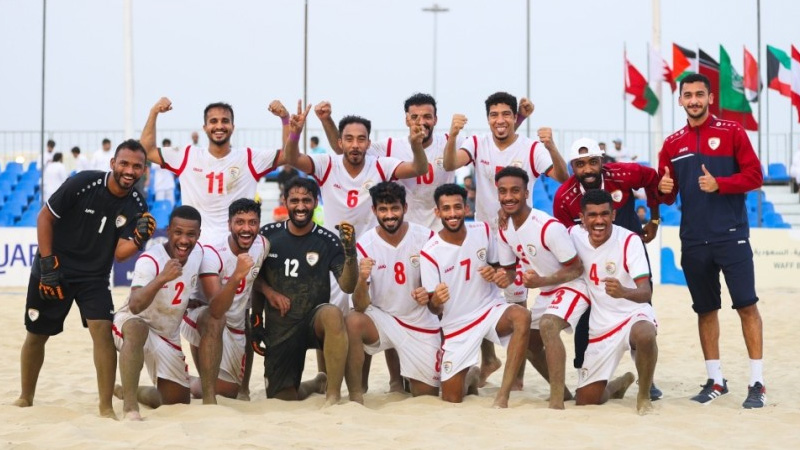
Source: omanobserver
Beach soccer is a thrilling and entertaining version of soccer played on sandy beaches, typically in a 5-a-side format. The game’s relaxed setting and challenging surface create a unique spectacle for both players and spectators.
Beach soccer demands a combination of skills like accurate shooting, acrobatic movements, and quick decision-making to adapt to the sand’s unpredictable nature. FIFA organizes the Beach Soccer World Cup, attracting teams from various countries to compete for the prestigious title.
4. Indoor Soccer (Arena Soccer or Indoor Football)
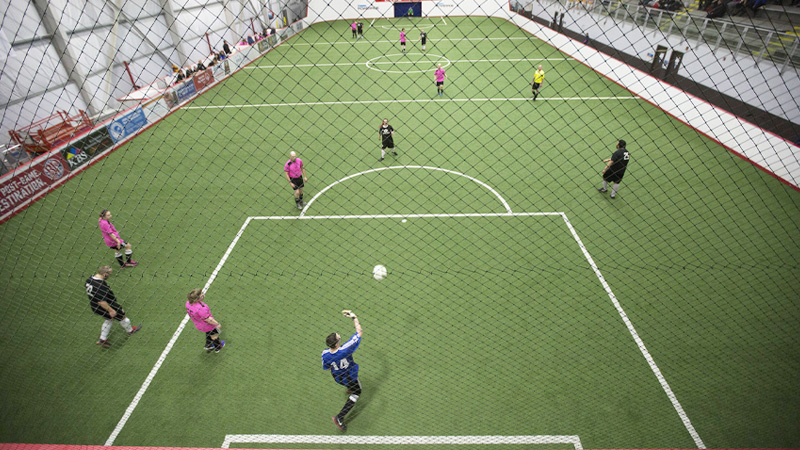
Source: rimbeyreview
Indoor soccer is played in enclosed arenas or sports halls with smaller fields and different rules compared to traditional soccer. The sport provides a faster-paced and more dynamic experience, requiring players to adapt their strategies to the confined space.
Indoor soccer is popular in regions with harsh weather conditions, where it serves as an excellent alternative to outdoor play during the winter months. Various indoor leagues exist worldwide, showcasing talented players and catering to fans who enjoy the electrifying atmosphere of indoor matches.
5. Street Soccer
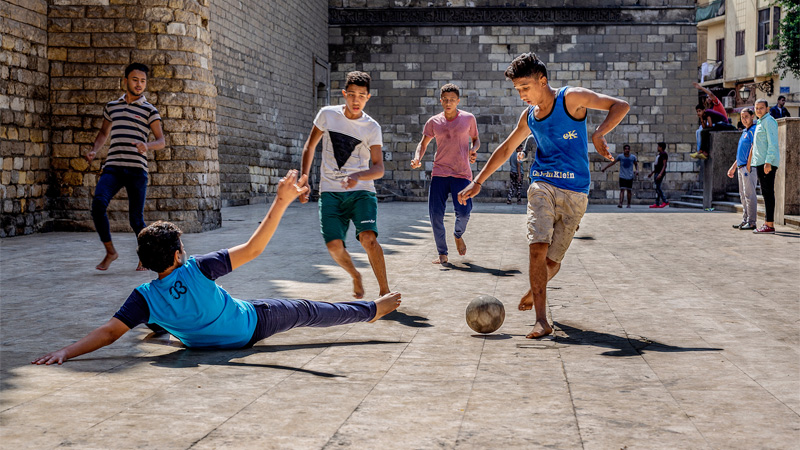
Source: wikipedia
Street soccer, as the name suggests, is played in informal settings such as streets, playgrounds, or any open spaces. It is characterized by its freestyle and improvisational nature, where players often display impressive dribbling tricks, creative maneuvers, and individual flair.
Street soccer is more about self-expression and having fun with the game rather than strict adherence to formal rules. This style of soccer has played a crucial role in nurturing talents, as many professional players honed their skills through street soccer.
6. Blind Soccer (Football for Visually Impaired Athletes)
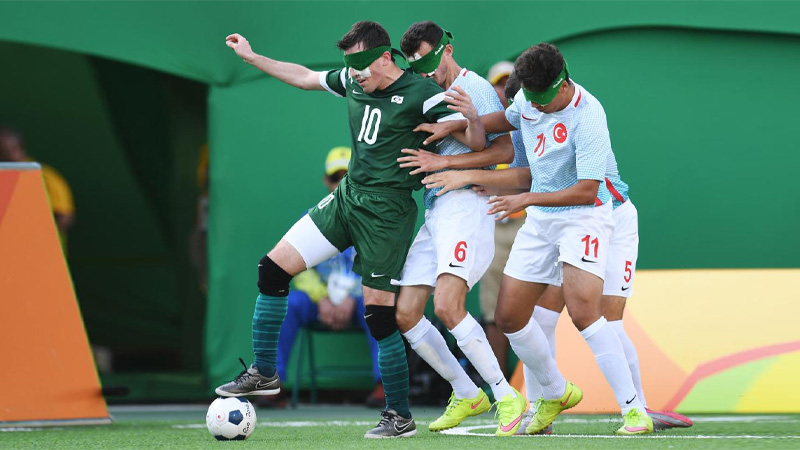
Source: paralympic
Blind soccer is a highly inclusive and inspirational form of soccer designed specifically for visually impaired athletes. The ball used in blind soccer contains rattles, allowing players to locate it by sound. The goalkeepers have limited vision, while outfield players wear blindfolds to ensure a level playing field.
The sport relies heavily on communication and spatial awareness, and players exhibit exceptional control and accuracy in their passes and shots. Blind soccer has gained recognition as a Paralympic sport and has paved the way for athletes with visual impairments to participate in the beautiful game.
7. Powerchair Soccer (Football for Power Wheelchair Users)
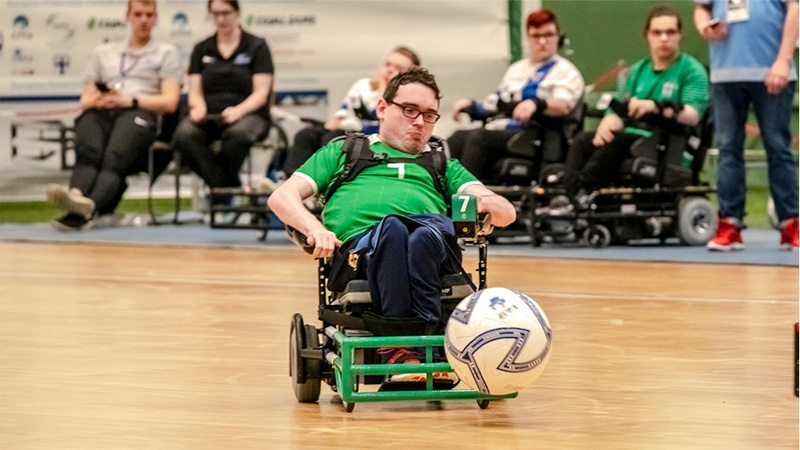
Source: irishfa
Powerchair soccer is a modified version of soccer created for athletes with physical disabilities, particularly those who use power wheelchairs. The players navigate the field in specially designed wheelchairs, and the ball used is slightly larger and equipped with a larger bell to enhance visibility.
Powerchair soccer requires a unique combination of skills, including precise chair control, dribbling, and shooting. The sport enables individuals with severe physical impairments to actively engage in soccer, fostering a sense of community and promoting inclusivity in sports.
8. Paralympic Soccer
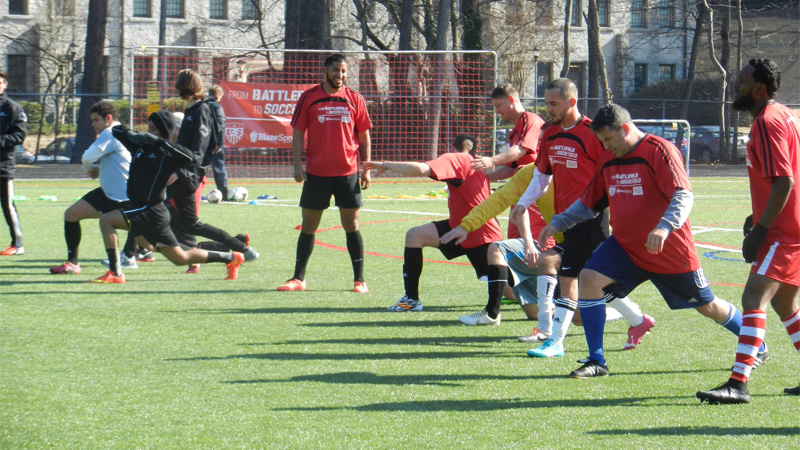
Source: oglethorpe
Paralympic soccer, also known as football 5-a-side, is a variant of soccer specifically designed for athletes with visual impairments. It is one of the most thrilling and inspiring sports in the Paralympic Games.
The field is smaller, and the match is played with a smaller, noisier ball containing bells to aid players in locating its position. Players wear blindfolds to ensure fairness, as some may have varying degrees of vision.
Despite their visual impairments, the athletes showcase incredible skill, teamwork, and determination on the pitch. Their heightened sense of hearing, communication, and spatial awareness enables them to navigate the field, dribble, and score goals.
The goalkeeper, who is sighted, acts as a vital part of the team, providing crucial instructions to players and preventing shots from entering the net. Paralympic soccer not only promotes inclusivity and equality in sports but also serves as a testament to the power of human resilience and adaptability.
9. Soccer Tennis
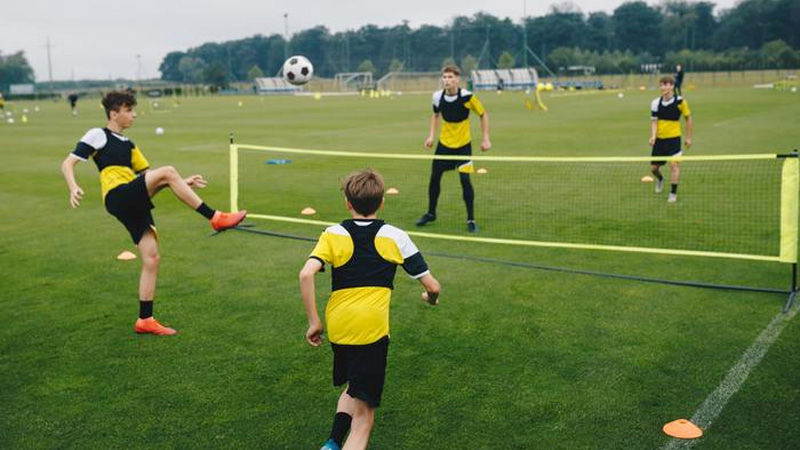
Source: jobsinfootball
Soccer tennis, also known as soccer-tennis or footvolley, is a fun and challenging variation of soccer that combines elements of both soccer and tennis.
Played on a smaller court, typically a beach volleyball court, soccer tennis uses a tennis net, and the players use a tennis ball instead of a traditional soccer ball. The game requires a combination of soccer skills such as volleying, heading, and dribbling, along with the precision and finesse of tennis shots.
Players can use any part of their body except their arms and hands to keep the ball in play. The objective is to get the ball over the net, ensure it bounces within the court boundaries, and prevent the opposing team from returning it effectively.
Soccer tennis is a popular recreational activity on beaches and in leisure centers, attracting players of all ages and skill levels. It helps improve soccer techniques, agility, and teamwork while providing a fun and social way to stay active.
10. Footvolley
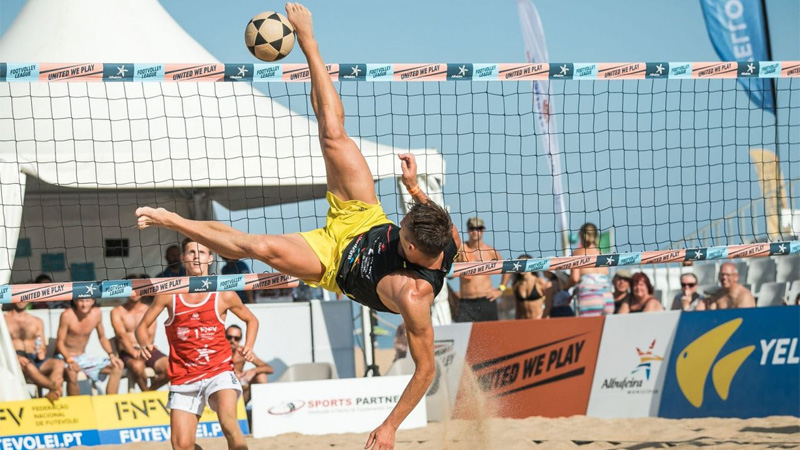
Source: theportugalnews
Footvolley is an exciting and dynamic sport that originated in Brazil during the 1960s. Combining elements of soccer and beach volleyball, it is typically played on a sandy surface, with a net dividing the two sides. Like beach volleyball, the players are not allowed to use their hands or arms.
The game demands a high level of athleticism, as players must possess strong technical skills, agility, and excellent control over the ball. The goal is to send the ball over the net and into the opposing team’s half, trying to make it impossible for them to return it successfully.
Footvolley has gained popularity worldwide, with numerous tournaments and events held internationally. It provides a fantastic spectacle for spectators and a challenging yet enjoyable experience for players, making it a favorite pastime on beaches and sandy shores.
11. Sepak Takraw
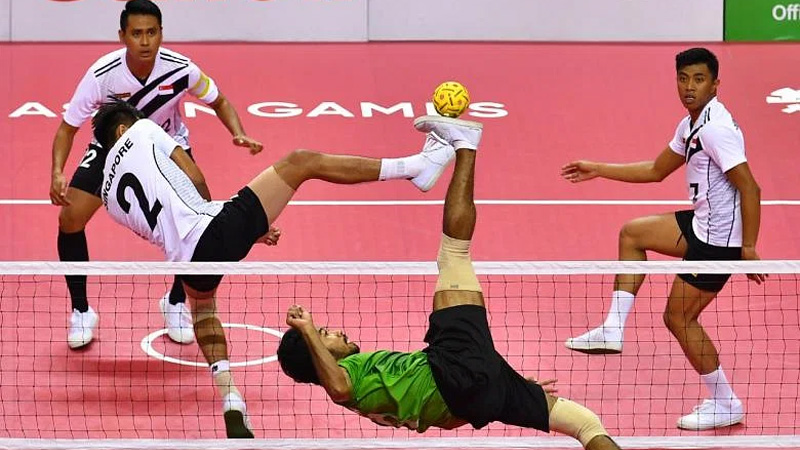
Source: straitstimes
Sepak Takraw is a traditional sport that originated in Southeast Asia, with its roots dating back centuries. The game involves two teams competing to kick a rattan ball over a net without using their hands or arms. Players use their feet, knees, chest, and head to control and direct the ball.
Sepak Takraw demands incredible athleticism, agility, and acrobatic skills. Players perform acrobatic jumps, spins, and mid-air kicks to outmaneuver their opponents and score points. The game is typically played on a rectangular court, and points are scored when the ball touches the ground in the opposing team’s area.
This sport showcases the rich cultural heritage of Southeast Asia and has gained international recognition, with various national and international competitions. Sepak Takraw players demonstrate grace, coordination, and precision, attracting spectators worldwide with their captivating displays of athleticism and tradition.
12. Freestyle Soccer
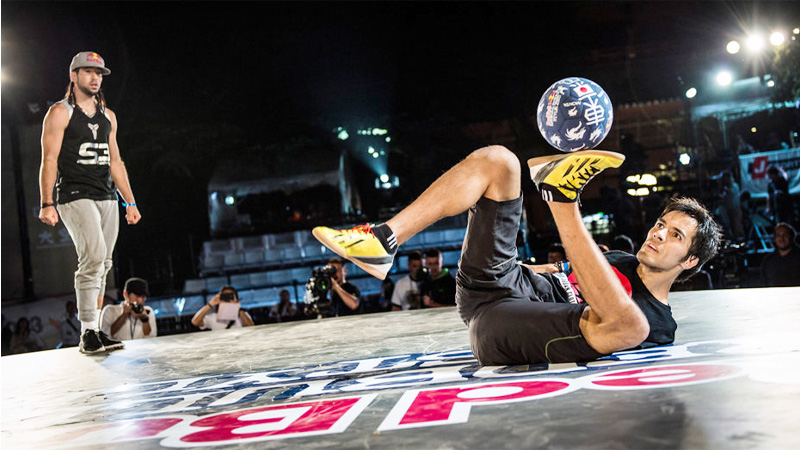
Source: change
Freestyle soccer, also known as freestyle football, is a form of soccer that focuses on individual creativity, technical skill, and artistic expression. Players, known as freestylers, perform a variety of tricks, juggling, and acrobatic moves using the ball, displaying their flair and finesse in impressive routines.
The sport allows for complete freedom of expression, and freestylers invent and innovate new tricks to showcase their talent. Freestyle soccer has gained popularity through social media platforms, where freestylers upload videos of their incredible displays of ball control, captivating audiences worldwide.
Aside from being an entertaining spectacle, freestyle soccer also contributes to the development of ball control, balance, and coordination. Many freestylers also compete in national and international competitions, showcasing their skills in front of live audiences and judges.
13. Headis
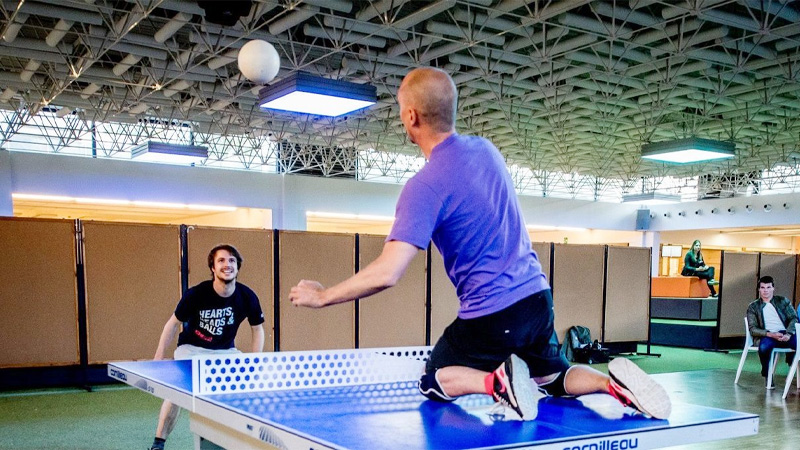
Source: thesoccerarena
Headis, a fusion of soccer and table tennis, is a relatively new sport that has been gaining popularity in recent years. It is played on a table tennis table, using a modified soccer ball that is softer and lighter than a standard soccer ball.
The players use their heads, instead of their feet, to hit the ball over the net. The objective is similar to table tennis, aiming to score points by landing the ball in the opponent’s half of the table, with the added twist of using only their heads.
The head requires precise timing, coordination, and quick thinking to outmaneuver opponents. The game is played in singles and doubles formats, and it has developed a competitive scene with tournaments held worldwide, attracting players from diverse backgrounds.
14. Panna
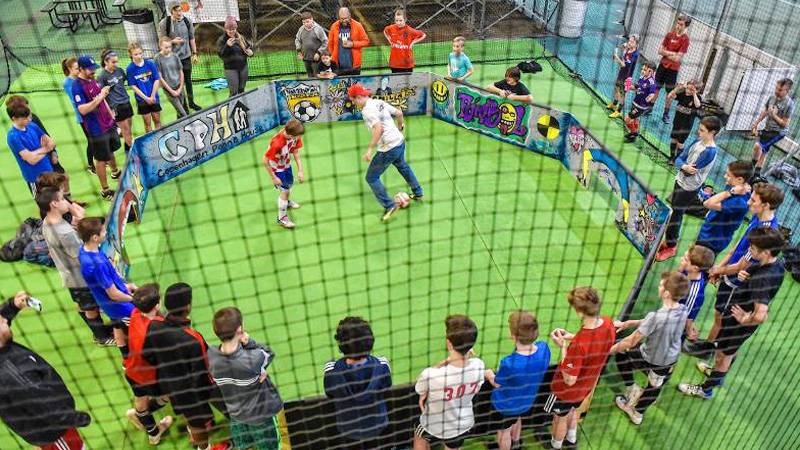
Source: gazettenet
Panna, also known as nutmeg football or street soccer, is a fast-paced and skillful variation of soccer that revolves around attempting to nutmeg or pass the ball between an opponent’s legs. The game is often played one-on-one or in small teams on a compact pitch.
In Panna, scoring goals is not the only objective; players aim to humiliate opponents by executing successful nutmegs. It demands quick footwork, close ball control, and an excellent understanding of spatial awareness to maneuver around opponents and perform successful nutmegs.
This style of play has become popular in street football culture, where players showcase their individual skills and creativity. Panna tournaments and competitions have emerged, with players competing to become recognized as the best in this entertaining and thrilling form of soccer.
15. Socca
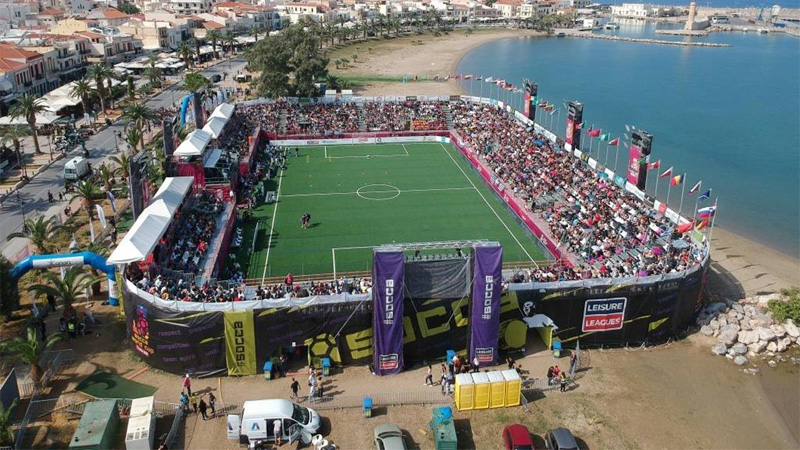
Source: soccamexico
Socca, also known as small-sided soccer, is a variation of soccer played on a smaller field with a reduced number of players on each team. Typically, the game is played with smaller goals and a smaller ball, accommodating a smaller team size of 5 to 7 players per side.
Socca is highly popular in social and recreational settings, as it offers a fast-paced and dynamic version of the traditional game. The smaller field size and reduced player numbers enhance the speed of play and the frequency of goal-scoring opportunities.
This variant of soccer is commonly played in leagues, tournaments, and pick-up games, attracting players of all ages and skill levels. Socca’s adaptability makes it a preferred choice for casual play and organized competitions, fostering a sense of community and camaraderie among participants.
FAQs
What is Paralympic soccer, and how is it played?
Paralympic soccer, also known as football 5-a-side, is designed for athletes with visual impairments. The players wear blindfolds and compete in a smaller field using a smaller, noisier ball with bells inside.
The goalkeeper, who is sighted, provides crucial guidance, and players rely on their heightened senses to navigate, dribble, and score goals.
How does Soccer Tennis differ from traditional soccer?
Soccer tennis, also known as footvolley, combines soccer and tennis elements. Played on a smaller court, the players use a tennis ball and attempt to volley it over the net using any part of their body except their arms and hands.
It requires precision and technique, providing a fun and challenging way to improve soccer skills.
What is Sepak Takraw, and where did it originate?
Sepak Takraw is a traditional sport from Southeast Asia, where two teams compete to kick a rattan ball over a net without using their hands. Players utilize their feet, knees, chest, and head to control the ball, resulting in breathtaking acrobatics and impressive displays of athleticism.
How does Freestyle Soccer differ from regular soccer?
Freestyle soccer, also known as freestyle football, is a form of soccer that focuses on individual creativity and technical skill. Players, known as freestylers, perform tricks, juggling, and acrobatic moves with the ball, showcasing their flair and finesse.
What makes Socca a popular variation of soccer?
Socca, also known as small-sided soccer, is played on a smaller field with fewer players on each team. This variant offers faster and more dynamic gameplay, attracting players of all ages and skill levels in recreational and competitive settings.
Conclusion
The world of soccer is vast and diverse, transcending cultural boundaries and captivating people worldwide. From Paralympic soccer, showcasing the triumph of the human spirit, to the artistry of Freestyle Soccer, each variation offers a unique experience and appreciation for the beautiful game.
Whether playing on sandy beaches, small-sided courts, or in the heart of bustling cities, these types of soccer celebrate the universal passion for soccer while embracing the distinctiveness of various cultures.
So, next time you kick a ball around with friends or watch a thrilling soccer match, remember the rich tapestry of Types of Soccer that exists beyond the boundaries of the traditional 11-a-side game. Thank you.

